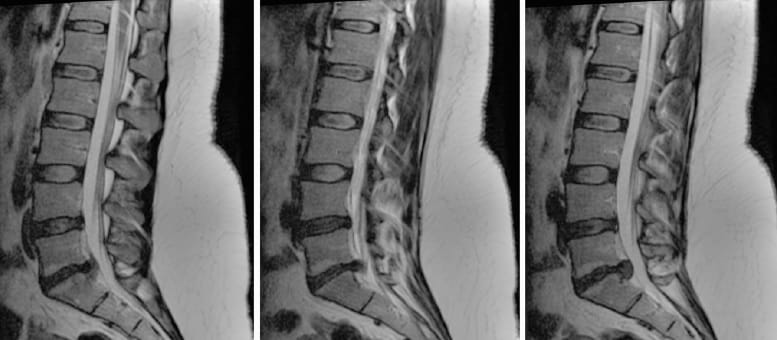
IN a recent edition of our journal, Summons, Mr Robert MacFarlane, consultant neurosurgeon at Addenbrooke’s Hospital in Cambridge, highlights the red flag symptoms when considering cauda equina syndrome (CES) and stresses the importance of early diagnosis and treatment.
CES is a condition which a GP will see perhaps once or twice in their career. However, at MDDUS missed or delayed diagnoses of CES feature frequently in our high value cases, often due to symptoms being commonly associated with less severe conditions.
Cauda equina syndrome may prove challenging to identify in its early stages, however, in our experience comprehensive note taking is key in demonstrating a sound examination and decision making process when faced with a potential incidence. Two very similar cases which we have recently dealt with on behalf of members highlight this point well.
MDDUS experience
In both cases the patient presents to their GP with ongoing back discomfort and unilateral sciatic pain. In both cases the GP considers the condition to most likely be sciatica and proceeds with the relevant treatment plan.
In case A, the GP notes his differential diagnosis of sciatica but also demonstrates that he has considered CES. He evidences this by detailing relevant examinations undertaken to identify signs of the condition. He also notes the red flag symptoms that he has discussed with the patient, and the actions he advises the patient to take should their condition progress or worsen.
In case B, the consultation moves along very similar lines. Upon investigation of the case, the GP states that he had also considered CES and had undertaken appropriate examinations. He also states that he informed the patient of the red flag signals associated with the condition and action to take should they occur.
However, in case B our member’s defence is reliant only on memory. The notes are very sparse and only detail positive findings with no mention of any examinations which result in negative findings i.e. no altered saddle sensation, no need to strain during urination. Crucially, the records fail to detail any record of informing the patient of red flag symptoms and the urgency around these should they arise.
The outcomes
In both cases the patient outcomes were, unfortunately, similar with both sustaining life-changing damage. The outcomes for our members were quite different though. In case A we could demonstrate that our member had conducted a full examination and his actions at that point in time were reasonable and defensible.
In case B we did not have sufficient evidence from the patient record to defend our member’s actions and the case was subsequently settled for a six-figure sum.
Minimising the risk
The original Summons article details a number of measures which can be taken to minimise the risks around diagnosis of this condition and these include:
- Think about the diagnosis of CES in every patient with back pain and sciatica. Make a written note of the full extent of any examination and if there is no evidence of this condition.
- Warn the patient to seek emergency attention if they develop the red flag symptoms associated with CES symptoms. Document that they have been told this.
- If CES is suspected, telephone the on-call orthopaedic or neurosurgery team. Do not be reassured if a junior doctor tells you to refer the patient as an urgent out-patient. If you are not satisfied with the response, seek a more senior opinion or tell the patient to attend A&E.
Read the full Summons article here
This page was correct at the time of publication. Any guidance is intended as general guidance for members only. If you are a member and need specific advice relating to your own circumstances, please contact one of our advisers.
Save this article
Save this article to a list of favourite articles which members can access in their account.
Save to library

